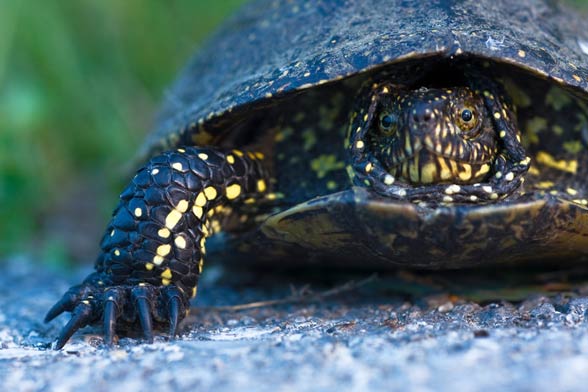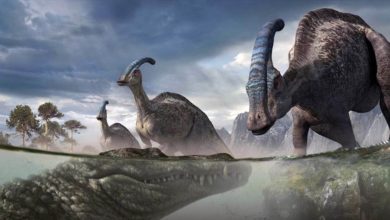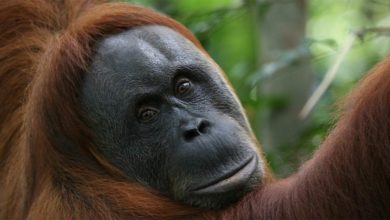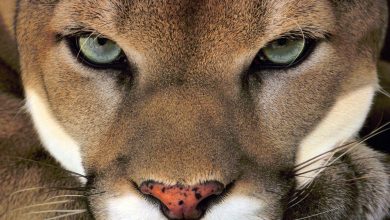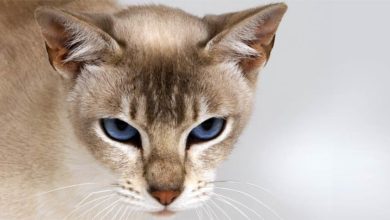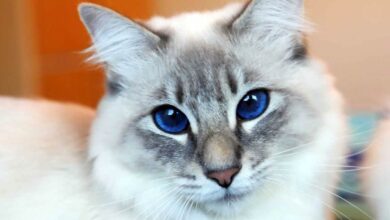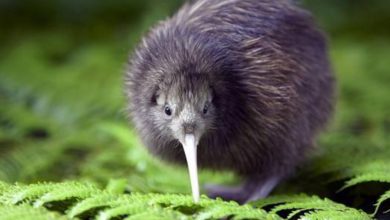European pond turtle, European pond terrapin (Emys orbicularis)
An inconspicuous shelled reptile, which stands out with its unique habits, as it hibernates during the coldest and hottest months. Due to its small size and interesting appearance, it has become a hunting target, which has led to a considerable population reduction in recent years. It is the only turtle species living naturally in Poland.
Classification
- Kingdom: Animalia
- Class: Reptilia
- Order: Testudines
- Family: Emydidae
- Subfamily: Emydinae
- Genus: Emys
- Species: Emys orbicularis
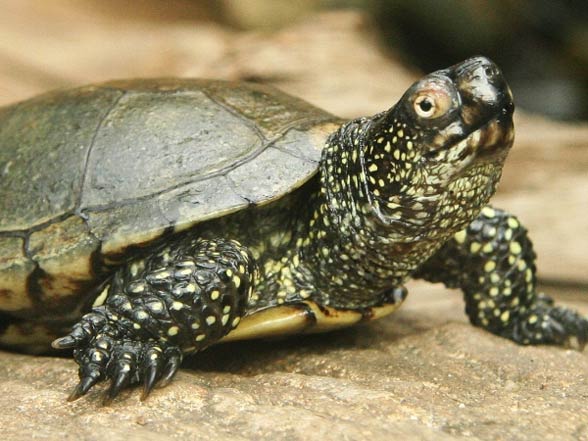
Subspecies
Today there are 14 European pond turtle subspecies, which are distinguished by their size, coloration and body patterns, yet still many experts undermine such a classification.
- Central Turkey pond turtle – (Emys orbicularis luteofusca)
- Colchis pond turtle – (Emys orbicularis colchica)
- Common European pond turtle – (Emys orbicularis orbicularis)
- Corsican pond turtle – (Emys orbicularis lanzai)
- Eastern pond turtle – (Emys orbicularis persica)
- Eiselt’s pond turtle – (Emys orbicularis eiselti)
- Italian pond turtle – (Emys orbicularis galloitalica)
- Kura Valley pond turtle – (Emys orbicularis iberica)
- North African pond turtle – (Emys orbicularis occidentalis)
- Obst’s pond turtle – (Emys orbicularis fritzjuergenobstii)
- Sardinian pond turtle – (Emys orbicularis capolongoi)
- Spanish pond turtle – (Emys orbicularis hispanica)
- Suedkaspi pond turtle – (Emys orbicularis orientalis)
- Western Turkey pond turtle – (Emys orbicularis hellenica)

Range
It inhabits southern and central Europe, North Africa, and West Asia. During the Atlantic period of the Holocene (from 7,500 to 5,000 years ago), its range was much wider, extending to the northern parts of Europe, up to southern Sweden. It also lives in the wild in Poland. Once common, it now occurs mainly in landscape parks and nature reserves.
Name and habitat
Its name suggests its preferred habitats, including wetlands, forests, mountain areas (the best in terms of food abundance), and freshwater reservoirs: ponds, lakes, streams, rivers, and man-made ducts.
The European pond turtle favors water reservoirs with soft, sandy, or muddy bottoms with lush greenery, yet with few predators. It is important that there are sandy areas nearby, as the turtle’s eggs are laid there. Baby turtles prefer shallow waters (max. 50 m [164 ft] deep).
A mainly aquatic species, it crawls onto the land to bask in the sun and lay eggs, but experts consider it to be a mixed-habitat species.
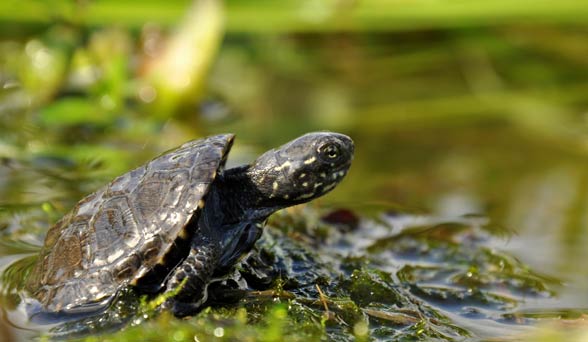
Characteristic
Appearance
The European pond turtle is one of several freshwater turtle species living in Europe. Although its appearance varies depending on the inhabited areas, it is usually easily distinguished by its bright yellow or golden spots on its carapace and skin (for both immature and adult turtles).
Due to its spectacular look, it has become a desired pet. Some populations, nonetheless, are completely black with only a few spots.
Northern and southern turtles
Generally, the reptiles living in northern areas seem larger and darker than their southern relatives. Interestingly, sexual dimorphism involves the color of the iris and is also dependent of the region: males may have red, brown-yellow or yellow to white eyes, while females usually have a yellow iris, rarely white.
The carapace shape and coloration alter with age: baby turtles have rounded shells; the scutes are rough, uniformly dark brown all over the dorsal part of the shell, and black on the plastron (ventral part). The yellow spots are located along the shell’s edge. Dorsal scutes may be striped. The head, legs, and tail are dark with yellow or brownish speckles. Its head is covered with smooth skin, with limbs being membrane-like. The carapace is 12-38 cm (5-15 in) long. The plastron is connected to the rest of the body quite loosely, with a set of ligaments that act like hinges.
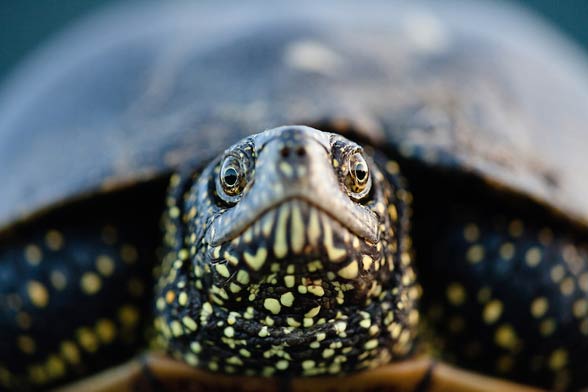
Diet and hunting techniques
Menu
The European pond turtle is mostly carnivorous. Most specimens are regular predators, yet their menu is changeable – smaller turtles hunt for small aquatic animals, favoring larger prey as they get older. It eats bugs, insects, frogs, and fish: all typically found in water reservoirs.
Hunting
The reptile strikes biting the victim`s head sides, shredding it to pieces afterwards with its sharp claws located on the tips of front limbs. In the natural habitat, this predator may catch prey only when it moves.
In captivity, it often switches to eating fruit and vegetables.
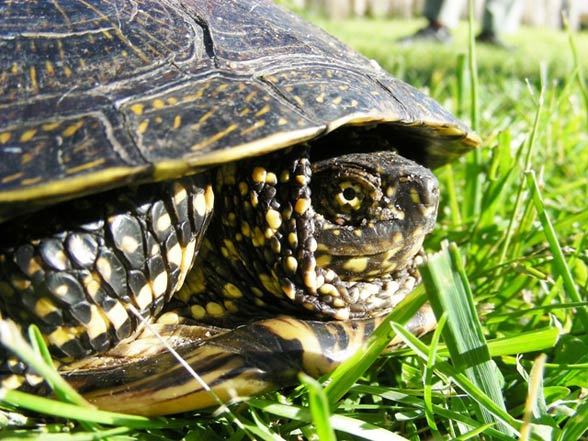
Hibernation and aestivation
Diverse climate conditions resulting from a wide range of factors force these animals to adapt. As a result, northern populations spend winter months in hibernation, while those in the hottest habitats go into aestivation during summer.
Methods of defense against predators
Distinctive ‘hinges’ on the plastron allow the turtle to hide in its shell and close the openings for its limbs, head, and tail, which is an effective defense technique.
Eggs and baby turtles face the greatest threats. They often become prey for a variety of animals, including herons, raccoons, bears, snakes of the Lampropeltis genus, crabs of the Ocypode genus, hermit crabs, dogs, seagulls, alligators, crocodiles, foxes, rats, cats, and cormorants.
Baby turtles are also frequently hunted by predatory fish, coyotes, carnivorous raptors, and humans.
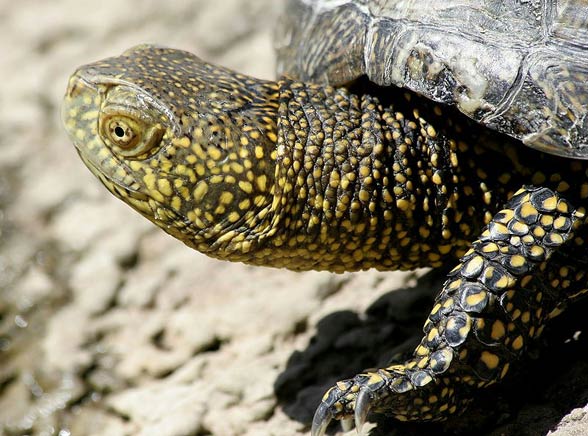
Life style
During the day, the turtle basks in the sun, lying still on warm rocks. In the water, only its nose and eyes can be seen above the surface; sometimes it hides among floating vegetation. During hibernation, it remains hidden in the mud, from which it emerges only in late spring.
Hierarchy
Observations have shown that there is a hierarchy and desire to dominate among males, especially during the mating season. They may act territorially during hunts. The resulting dominant behaviors include stretching the neck, jerking movements, biting opponents, and other similar actions. Submissive behaviors have also been observed.
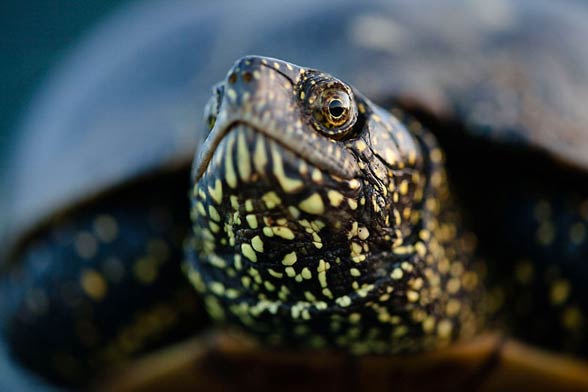
Calm and docile in captivity
In captivity, they become calm and can be easily tamed. However, in their natural habitat, they are very shy and cautious around humans.
Groups
Adult turtles are bound into couples and live in small groups. Their actions depend on season of the year and environmental conditions e.g. ambient temperature fall diminishes appetite.
Local migrations
Furthermore, these animals migrate locally and hunt actively. They may remain underwater for many hours without the necessity of drawing a breath.
Vocalizations (sounds)
In the mating season, European pond turtles emit short, shrill sounds. Vocalizations may also sound like whistling, tweeting and even groaning when in danger. Head movements are an important mean of communication, auditory stimuli being vital part of mating process.

Breeding
European pond turtles get together in pairs, which is followed by courtship and copulation. The sexual intercourse takes place on sandy areas or under leaves. Most females and males live together in harmony, yet aggressive behaviors towards own species also happen.
After reaching sexual maturity around 5-6 years of age the females may lay eggs. One hatch normally consists of 8-10 white, elongated eggs with hard shells, about 15-25 mm (0.6-1 in) long.
Nest
A pregnant female seeks a dry ground without any vegetation. When the perfect spot is located, it digs a hole about 5 cm (2 in) deep with its tail. After laying eggs in it the female covers the nest with soil, pressing the dirt firmly – then it walks away.
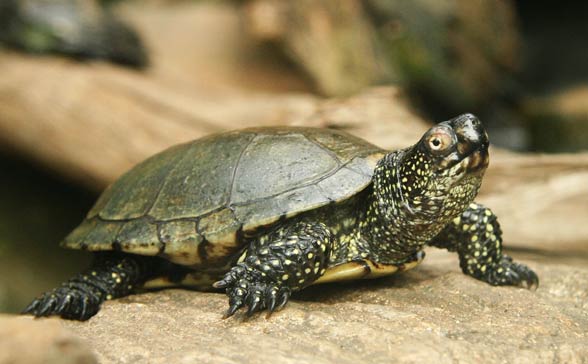
Offspring
Incubation lasts for 90-100 days, after which baby turtles are fully developed, yet spend the winter in hibernation until they hatch the next spring. European pond turtles may carry out several hatches a year.
Temperature and gender
The gender of baby turtles is determined by the incubation ambient temperature – below 25 degrees Celsius fetuses form males, while above 30 degrees – females.
Males become sexually mature earlier than females, but they are also smaller. Both features are an adaptive element resulting from numerous factors over a given region, including ecological factors, food abundance, genetic issues and habitats` quality. A change in diet and long-term activeness influence the growth pace – it is slowed down gradually, which prolongs the maturing process.
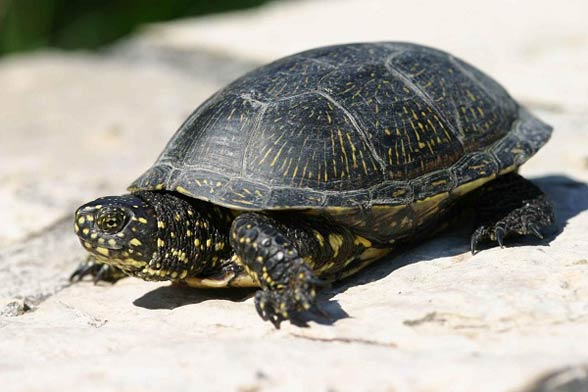
Protected species
The European pond turtle is a very rare species and is subject to strict specific protection. It has been enlisted in the Polish Red Book of Animals with the EN conservation status, which is granted to high-risk species, endangered with extinction. As a whole, the species is ranked nt (near threatened lower risk status).
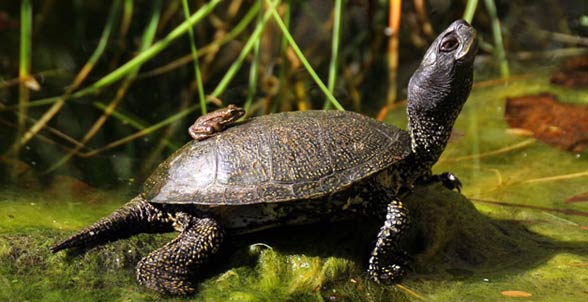
Detailed characteristic / size
European pond turtle, European pond terrapin (Emys orbicularis)
- Carapace length: 12-38 cm (5-15 in), still, rarely exceeds 20 cm (8 in)
- Weight: about 1 kg (2 lb)
- Lifespan: 40-60 years. There are extremely rare cases of turtles living for even over 100 years.
European pond turtle – interesting facts
- Despite being mainly an aquatic animal, it may crawl 1,000-4,000 m (0.6-2.5 mi) to the inland.
- Males become sexually mature earlier than females and are usually smaller than female turtles, although the growth ratio is almost the same for both genders.
- European pond turtles are often victims of hunting for meat and body parts used by tribal medicine. Additionally many people buy live turtles (not always legally) treating them as pets. As a result, the species has been granted an endangered conservation status.
